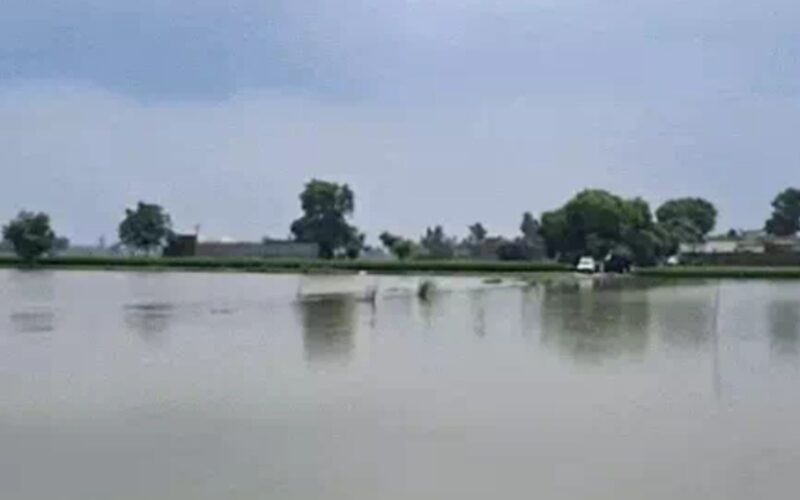Chandigarh: Heavy inflows from Himachal Pradesh have pushed Punjab into a flood scare, with seven districts reporting waterlogging after the release of water from dams. While there is no immediate forecast of heavy rainfall until August 23, officials have warned that the situation may worsen with more water being discharged.
The Meteorological Department has predicted scattered light to moderate rainfall today in districts such as Pathankot, Amritsar, Hoshiarpur, Rupnagar, Kapurthala, Jalandhar, Nawanshahr, Fatehgarh Sahib, and Patiala. On August 23, however, widespread rain is expected, for which a yellow alert has been sounded.
In the past 24 hours, the state’s temperature rose by 2.4°C, bringing it closer to the seasonal average. Faridkot remained the hottest with 39.8°C.
Controlled Release from Bhakra and Pong Dams
On Tuesday afternoon, the Bhakra Beas Management Board opened four sluice gates of Bhakra Dam, releasing nearly 45,000 cusecs of water into the Sutlej River and adjoining canals. Officials clarified that the dam is still operating safely below the red mark and urged residents not to panic.
Meanwhile, authorities at Pong Dam have announced the release of 75,000 cusecs of water today, as the reservoir level touched 1383.03 feet, still seven feet shy of the danger point.
Situation in Affected Areas
Floodwaters have shown some decline in Ravi and Ujj rivers, providing relief to parts of Pathankot and Gurdaspur, while water levels in Kapurthala’s Beas belt are also easing slightly. Yet, more than 25 villages in Mand block remain cut off, and stagnant water continues to threaten homes and farmland.
According to preliminary assessments, 14,200 acres of farmland across six districts have been submerged. Ferozepur, Fazilka, and Kapurthala are among the worst-hit areas, where several villages have lost road connectivity.
The Punjab administration has issued a high alert across flood-prone zones of Fazilka, Ferozepur, Tarn Taran, Gurdaspur, Hoshiarpur, and Kapurthala. To manage emergencies, 438 NDRF teams and 172 ambulances have been stationed in vulnerable areas.

